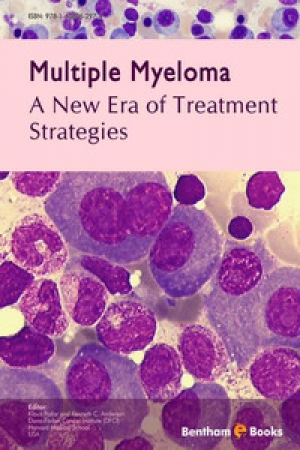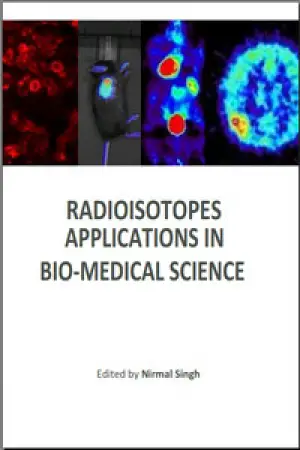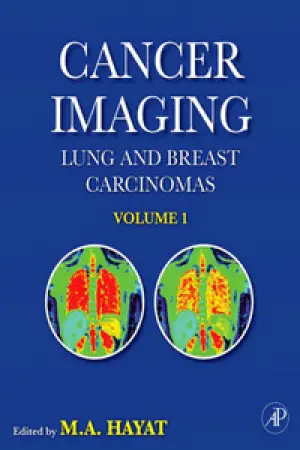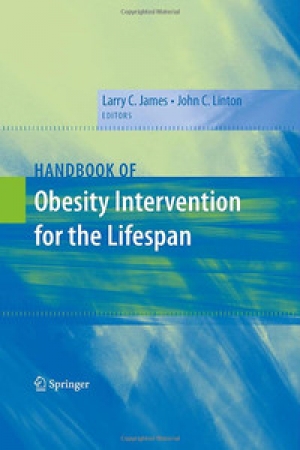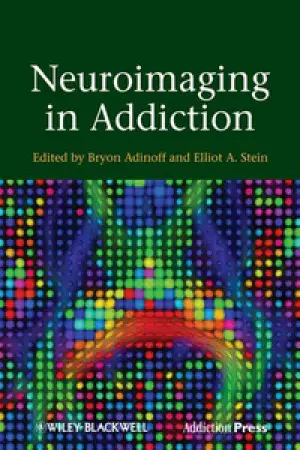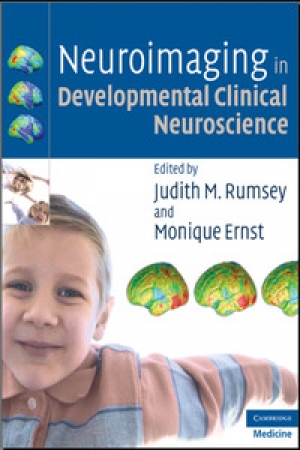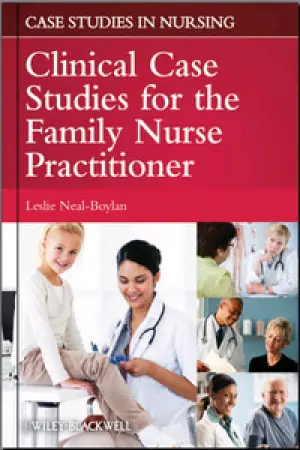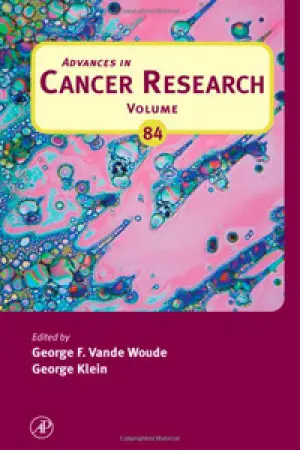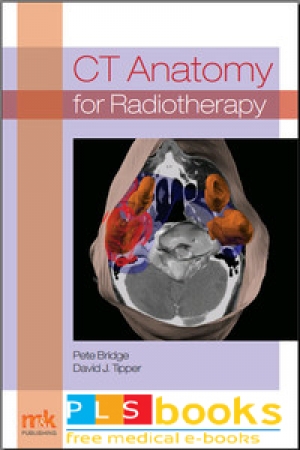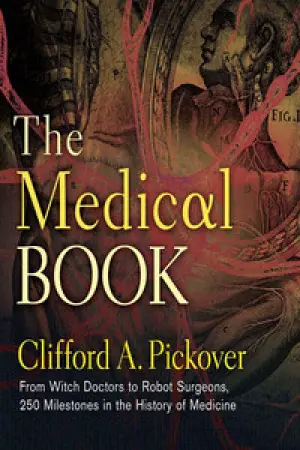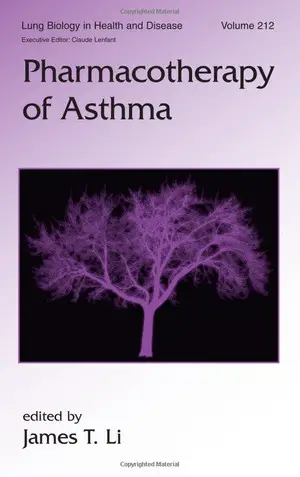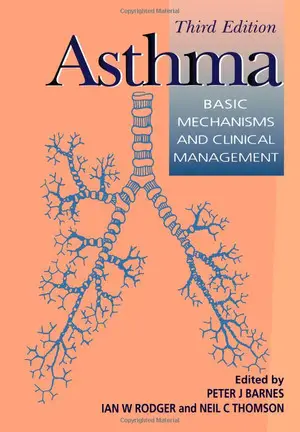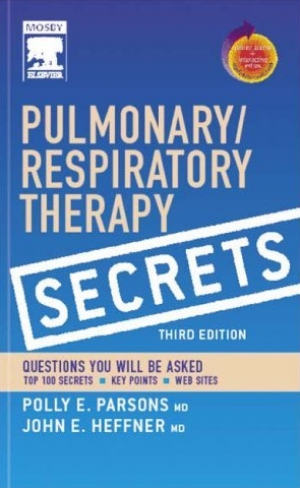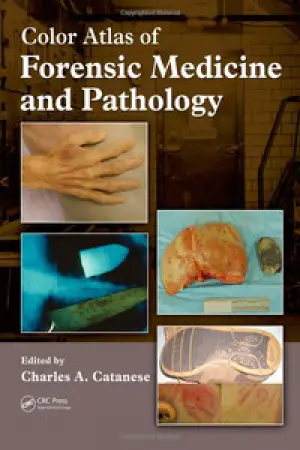Displaying items by tag: Books
Multiple Myeloma – A New Era of Treatment Strategie
Description: Multiple Myeloma (MM), the second most common blood cancer in adults, is a clonal plasma cell malignancy within the bone marrow characterized by osteolytic bone lesions, renal disease, and immunodeficiency. It is now well established that MM cell- induced disruption of the bone marrow homeostasis between the highly organized cellular and extracellular compartments supports MM cell proliferation, survival, migration, and drug resistance via activation of various signaling pathways. Based on this knowledge, the prototypic drugs thalidomide, bortezomib, and lenalidomide, which target both MM cells and the bone marrow microenvironment, have already fundamentally changed treatment options of this disease. Indeed, their benefit is now not only shown in relapsed and refractory disease but they also improve overall response, duration of response, and progression-free and overall survival when used as part of first-line regimens. However, despite new insights into MM pathogenesis and exciting derived therapeutic advances, MM still remains incurable. Ongoing studies are therefore aiming to further delineate mechanisms of MM pathogenesis within the bone marrow to identify novel agents with enhanced cytotoxicity and decreased drug resistance to improve patient outcome. Multiple Myeloma - A New Era of Treatment Strategies is devoted to contributions from eminent scientists providing readers with comprehensive accounts of the most recent developments in the field of MM research. It addresses the interests of scientists and clinical investigators in MM research as well as other fields of oncology, in which the microenvironment is believed to play an important role.
Radioisotopes – Applications in Bio-Medical Science
Description: The book Radioisotopes-Applications in Bio-Medical Science contains two sections: Radioisotopes and Radiations in Bioscience and Radioisotopes and Radiology in Medical Science. Section I includes chapters on radioisotope production, radio-labeled nano-particles, radioisotopes and nano-medicine, use of radiations in insects, drug research, medical radioisotopes and use of radioisotopes in interdisciplinary fields etc. In Section II, chapters related to production of metal PET (positron emission tomography) radioisotopes, 3-dimensional and CT (computed tomography) scan, SS nuclear medicine in imaging, cancer diagnose and treatments have been included. The subject matter will by highly useful to the medical and paramedical staff in hospitals, as well as researchers and scholars in the field of nuclear medicine medical physics and nuclear bio-chemistry etc.
Cancer Imaging: Lung and Breast Carcinomas
Description: With cancer-related deaths projected to rise to 10.3 million people by 2020, the need to prevent, diagnose, and cure cancer is greater than ever. This book presents readers with the most up-to-date imaging instrumentation, general and diagnostic applications for various cancers, with an emphasis on lung and breast carcinomas--the two major worldwide malignancy types. This book discusses the various imaging techniques used to locate and diagnose tumors, including ultrasound, X-ray, color Doppler sonography, PET, CT, PET/CT, MRI, SPECT, diffusion tensor imaging, dynamic infrared imaging, and magnetic resonance spectroscopy. It also details strategies for imaging cancer, emphasizing the importance of the use of this technology for clinical diagnosis. Imaging techniques that predict the malignant potential of cancers, response to chemotherapy and other treatments, recurrence, and prognosis are also detailed. Concentrates on the application of imaging technology to the diagnosis and prognosis of lung and breast carcinomas, the two major worldwide malignancies Addresses the relationship between radiation dose and image quality Discusses the role of molecular imaging in identifying changes for the emergence and progression of cancer at the cellular and/or molecular levels
Handbook of Obesity Intervention for the Lifespan
Description: This book Edited by Larry C. James, Wright State University, Dayton, OH, USA John Linton, West Virginia University School of Medicine, Charleston Environmental, genetic, psychological, and societal factors interact to produce obesity, a chronic condition of epidemic proportions. The Handbook of Obesity Intervention for the Lifespan guides professionals in meeting this complex challenge with a multidisciplinary palette of evidence-based interventions that can be tailored to men and women across the lifespan, regardless of background. This unique reference combines salient research data and hands-on clinical applications for use with overweight patients, from the very young to the very old, and includes a “treatment resources” section with extra materials to bolster therapy-all geared toward respectful, encouraging treatment and lasting weight-loss results. Key features of the Handbook: Review of the obesity literature, both pediatric and adult. Exercise interventions for children and adults. Lifestyle interventions for adolescents, adults, and seniors. Weight-related cultural issues throughout the lifespan. Bariatric surgery: when is it indicated? How successful is it? The ten critical steps to healthy weight loss. Clinical resources, patient self-help materials, and useful websites. With excess weight contributing to some 300,000 deaths in the U.S. each year, the Handbook of Obesity Intervention for the Lifespan will be welcomed-and consulted frequently-by clinical and health psychologists, psychiatrists, primary care providers, and nutritionists.
Neuroimaging in Addiction
Description: Neuroimaging in Addiction presents an up-to-date, comprehensive review of the functional and structural imaging human studies that have greatly advanced our understanding of this complex disorder. Approaching addiction from a conceptual rather than a substance-specific perspective, this book integrates broad neuropsychological constructs that consider addiction as a neuroplastic process with genetic, developmental, and substance-induced contributions. The internationally recognized contributors to this volume are leaders in clinical imaging with expertise that spans the addiction spectrum. Following a general introduction, an overview of neural circuitry and modern non-invasive imaging techniques provides the framework for subsequent chapters on reward salience, craving, stress, impulsivity and cognition. Additional topics include the use of neuroimaging for the assessment of acute drug effects, drug-induced neurotoxicity, non-substance addictive behaviors, and the application of imaging genetics to identify unique intermediate phenotypes. The book concludes with an exploration of the future promise for functional imaging as guide to the diagnosis and treatment of addictive disorders. Scientists and clinicians will find the material in this volume invaluable in their work towards understanding the addicted brain, with the overall goal of improved prevention and treatment outcomes for patients. Features a Foreword by Edythe London, Director of the Center for Addictive Behaviors, University of California at Los Angeles.
Neuroimaging in Developmental Clinical Neuroscience
Description: Modern neuroimaging offers tremendous opportunities for gaining insights into normative development and a wide array of developmental neuropsychiatric disorders. Focusing on ontogeny, this text covers basic processes involved in both healthy and atypical maturation, and also addresses the range of neuroimaging techniques most widely used for studying children. This book will enable you to understand normative structural and functional brain maturation and the mechanisms underlying basic developmental processes; become familiar with current knowledge and hypotheses concerning the neural bases of developmental neuropsychiatric disorders; and learn about neuroimaging techniques, including their unique strengths and limitations. Coverage includes normal developmental processes, atypical processing in developmental neuropsychiatric disorders, ethical issues, neuroimaging techniques and their integration with psychopharmacologic and molecular genetic research approaches, and future directions. This comprehensive volume is an essential resource for neurologists, neuropsychologists, psychiatrists, pediatricians, and radiologists concerned with normal development and developmental neuropsychiatric disorders.
The Cook's Herb Garden
Description: With a catalog of 150 different culinary herbs and their varieties, more than 30 recipes, step-by-step photographs on how to plant, nurture, harvest, and store, and flavor charts that list the best herbs to partner with popular ingredients, The Cook's Herb Garden shows you how to grow your own supply of herbs whether on a window ledge, in pots, on the patio, or in a vegetable garden.
Clinical Case Studies for the Family Nurse Practitioner
Description: Clinical Case Studies for the Family Nurse Practitioner is a key resource for advanced practice nurses and graduate students seeking to test their skills in assessing, diagnosing, and managing cases in family and primary care. Composed of more than 70 cases ranging from common to unique, the book compiles years of experience from experts in the field. It is organized chronologically, presenting cases from neonatal to geriatric care in a standard approach built on the SOAP format. This includes differential diagnosis and a series of critical thinking questions ideal for self-assessment or classroom use.
Energy Healing: The Essentials of Self-Care
Description: True wellness begins at the energetic level. As traditional healers have known for thousands of years—and as modern medicine is affirming today—we have a subtle energy field that is as important to our well-being as our physical body is. With Energy Healing, integrative physician Ann Marie Chiasson offers a complete guidebook of easy-to-use energy practices to enhance our health and vitality. Drawing from the material she teaches at Dr. Andrew Weil’s Arizona Center for Integrative Medicine, Dr. Chiasson explores: Our subtle anatomy—understanding the chakras, meridians, and the key principles of energy medicine Self-diagnosis techniques for sensing the movement of energy in our bodies Practices for daily self-care and specific techniques to address energy blocks often seen in common illnesses and health issues Stories about how energy moves in and around us for healing— and why these stories themselves can enable us to heal Why our energy wanes as we age, and how we can replenish our vitality from sources in the world around us Dr. Chiasson has studied the latest research on energy medicine and healing traditions from around the world, and through her experience in her own practice, she has selected techniques that are accessible, effective, and show great long-term benefit. With Energy Healing, she presents an indispensible guide for expanding our understanding of the energetic dimension of our well-being and essential tools to help us take charge of our own health.
Advances in Cancer Research, Volume 84
Description: The Advances in Cancer Research series provides invaluable information on the exciting and fast-moving field of cancer research. This volume presents outstanding and original reviews on a variety of topics, including gene expression in inherited breast cancer, multiparameter analyses of cell cycle regulation in tumorigenesis, Rho GTPases in transformation and metastasis, the myc oncogene, genetic requirements for the episomal maintenance of oncogenic herpesvirus genomes, treatment of Epstein-Barr virus-associated malignancies with specific T cells, the role of glycogen synthase kinase-3 in cancer, chronic immune activation and inflammation in the pathogenesis of AIDS and cancer, and molecular biology of Hodgkin's lymphoma. Gene Expression in Inherited Breast Cancer Multiparameter Analyses of CellCycle Regulatory Proteins in Human Breast Cancer: A Key to Definition of Separate Pathways in Tumorigenesis Rho GTPases in Transformation and Metastasis The myc Oncogene: Marvelously Complex Genetic Requirements for the Episomal Maintenance of Oncogenic Herpevirus Genomes Treatment of Epstein-Barr Virus-Associated Malignancies with Specific T Cells Role of Glycogen Synthase Kinase-3 in Cancer: Regulation Wnts and Other Signaling Pathways Chronic Immune Activation and Inflammation in the Pathogenesis of AIDS and Cancer Molecular Biology of Hodgkin's Lymphoma
CT Anatomy for Radiotherapy
Description: Knowledge of CT anatomy is increasingly vital in daily radiotherapy practice, especially with more widespread use of cross-sectional image-guided radiotherapy (IGRT) techniques. Existing CT anatomy texts are predominantly written for the diagnostic practitioner and do not always address the radiotherapy issues while emphasising structures that are not common to radiotherapy practice. “CT Anatomy for Radiotherapy†is a new radiotherapy-specific text that is intended to prepare the reader for CT interpretation for both IGRT and treatment planning. It is suitable for undergraduate students, qualified therapy radiographers, dosimetrists and may be of interest to oncologists and registrars engaged in treatment planning. All essential structures relevant to radiotherapy are described and depicted on 3D images generated from radiotherapy planning systems. System-based labelled CT images taken in relevant imaging planes and patient positions build up understanding of relational anatomy and CT interpretation. Images are accompanied by comprehensive commentary to aid with interpretation. This simplified approach is used to empower the reader to rapidly gain image interpretation skills. The book pays special attention to lymph node identification as well as featuring a unique section on Head and Neck Deep Spaces to help understanding of common pathways of tumour spread. Fully labelled CT images using radiotherapy-specific views and positioning are complemented where relevant by MR and fusion images. A brief introduction to image interpretation using IGRT devices is also covered. The focus of the book is on radiotherapy and some images of common tumour pathologies are utilised to illustrate some relevant abnormal anatomy. Short self-test questions help to keep the reader engaged throughout.
The Medical Book: From Witch Doctors to Robot Surgeons, 250 Milestones in the History of Medicine
Description: Following his hugely successful The Math Book and The Physics Book, Clifford Pickover now chronicles the advancement of medicine in 250 entertaining, illustrated landmark events. Touching on such diverse subspecialties as genetics, pharmacology, neurology, sexology, and immunology, Pickover intersperses “obvious” historical milestones-the Hippocratic Oath, general anesthesia, the Human Genome Project-with unexpected and intriguing topics like “truth serum,” the use of cocaine in eye surgery, and face transplants. Internationally renowned author Clifford Pickover has published more than 40 books, translated into over a dozen languages. He is an associate editor for several journals and the author of over 200 articles on various subjects. Dr. Pickover received his PhD from Yale Department of Molecular Biophysics and Biochemistry. He holds over 80 US patents for inventions dealing with computing technologies and interfaces, and his website, pickover.com, has received millions of visits.
Pharmacotherapy of Asthma
Description: Standing as the only text focused on the pharmaceutical treatment of asthma, this reference details the pharmacology, mechanisms of action, efficacy, and safety of every drug currently used in the management and care of asthma patients. Internationally renowned authorities cover published practice guidelines, treatment plans, pharmacologic agents, and clinical studies to provide the most authoritative and up-to-date information on the use of medications to control and prevent this common condition. Reviewing the role of pharmacotherapy in the overall management of asthma, this guide: Reviews the pharmacology and clinical use of inhaled corticosteroids, beta adrenergic agonists, leukotriene modifiers, combination products, and many other asthma drugs Provides a practical framework for the optimal pharmacotherapy of asthma, focusing on outpatient therapy Examines international guidelines for the drug treatment of asthma.
Asthma: Basic Mechanisms and Clinical Management
Description: Now available in its Third Edition, Asthma: Basic Mechanisms and Clinical Management has become the reference text in asthma. This highly successful text sheds new light on the basic physiological and molecular mechanisms of asthma, how current treatments work, and how best to apply the latest knowledge to control this important disease. The Third Edition has undergone radical revision and includes several new chapters. It retains the virtues of the previous volumes by bringing together all of the recent research findings by internationally recognized experts on the causative mechanisms of asthma, including in-depth clinical aspects and therapy. The book presents an integrated approach toward the treatment of this disease with new concepts, changes in asthma management, and the development of new therapeutic agents. Asthma provides extensive references for researchers and clinicians who need to keep abreast of recent developments in this rapidly expanding field. Key Features Comprehensive coverage of both basic science and clinical aspects of asthma Extensively referenced throughout
Pulmonary/Respiratory Therapy Secrets
Description: This volume in the very popular Secrets Series® is back in an exciting, updated, and completely redesigned 3rd Edition. A new, two-color page layout, a more portable size, and a list of the "Top 100 Secrets” in pulmonary medicine help you better meet the challenges you face daily. You will still find all of the features you have come to rely on in the Secrets Series-a questions- and answer-format, lists, mnemonics, tables, and an informal tone that make reference fast and easy. No matter what questions arise in practice or while preparing for boards, this 3rd edition has the answers-in print and online.
Color Atlas of Forensic Medicine and Pathology
Description: New York City has the largest medical examiner’s office in the United States, and the Brooklyn division is the busiest of the five boroughs. Charles A. Catanese received his Forensic Pathology fellowship training in New York, and then worked full time as a Medical Examiner in the Brooklyn office for more than 10 years. He has personally performed more than 4000 autopsies, including over 400 homicides. Dr. Catanese has worked through several disasters, including TWA Flight 800, AA Flight 587, and more than nine months on the World Trade Center fatalities. He is currently the Chief Medical Examiner of Orange County, New York. Drawing on his wealth of knowledge and experience in solving some of the most difficult cases a forensic examiner could encounter, he assembles hundreds of images from his own work experience to present the Color Atlas of Forensic Medicine and Pathology.
